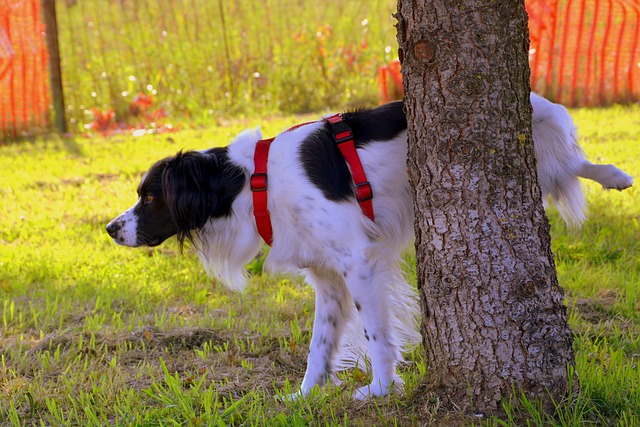
How Dogs Mark Their Territory
One thing a dog owner might not have experience with is marking. If you are unfamiliar with this, it occurs when a dog urinates a small amount to mark areas with their scent.
This behavior is very common for reproductive intact dogs, but it can be a nightmare for dog owners who must clean the mess. Today, we’re going to look at how dogs mark their territory and what you can do about this unwanted behavior.
Why Dogs Mark Territory
A dog that marks may have you pulling your hair out, but it’s pretty common when your dog is still reproductively intact. For female dogs, they are even more likely to mark right before going into heat. A dog can mark for several reasons.
These reasons include:
Changes in Environment
If your dog has had a change to their environment, this can trigger marking behavior. If a new guest has come into their territory, your dog might take the opportunity to exert their dominance. This also lets the guest know who’s in charge.
Similar behavior can occur when your dog goes into a different area. If the area has been marked by another dog, your dog may take the opportunity to make it their own. Dogs that mark want everyone to know who is in control in this territory, so they will mark as much as they can. A dog’s territory can extend to their home, backyard, homes of friends, and even parks or common walking paths.
Social Triggers
If your dog is placed in a different social situation, this can trigger marking behavior. Some dogs will only mark in the presence of same-sex dogs. Some dogs only mark in the presence of different sex dogs. And still some will mark only when placed somewhere that has already been marked by other dogs.
A dog also marks when they’re overstimulated or aroused.
Anxiety
A dog can even mark when they’re experiencing anxiety. Anything that causes anxiety can become a trigger. Moving to a new house, someone new moving in, new objects or furniture appearing and even conflict can cause anxiety marking.
How Dogs Mark Their Territory
How dogs mark their territory is going to change from dog to dog. The most common way for a dog to mark their territory is to literally lift their leg and urinate on an object or area. This works for dogs because their urine contains a lot of information about who they are.
A dog’s urine lets other dogs know about their sex, age, and status. Marking an area around their home is like leaving a business card for all the other dogs in the area to see. Dogs that are more dominant will likely mark more with submissive dogs marking far less.
While both male and female dogs exhibit marking behavior, non-neutered male dogs are the most likely dog to mark.
How to Prevent Marking
If your dog has been marking around the house, you’d probably like that behavior to stop. The first thing to do if your dog is marking is to ensure there is nothing wrong with your dog. Your dog may be experiencing incontinence issues if this behavior is new.
After ruling out medical issues, here are some tips to help your dog not mark as often:
- Clean well – After your dog marks, be sure to clean up their mess very well. If possible, use an enzymatic spray that will help remove all the scent from the area.
- Make previously marked areas unattractive – If your dog is marking in a certain area, consider using a repellent spray. Sprays with lemongrass or cinnamon work well because they have very pungent aromas that your dog won’t like. You can also start feeding and treating your dog in areas where they mark. This will help let your dog know that the area is theirs and that they don’t need to mark it.
- Resolve conflict – If your dog is marking because they conflict with other animals, an important step will be to fix that first. Your dog is trying to show dominance over the other animal. Once that is resolved, the marking should stop.
- Confine your dog – If your dog is marking when you leave them home alone, try reducing the area they have to guard. Either leave them in one room, or you can consider crate training your dog as well. This helps cut down on marking and can often help cut anxiety.
The biggest tip we can give you when it comes to marking does not punish a dog who marks. If your dog has marked many different areas while you were out, any kind of punishment is going to be ineffective. Your dog will not associate the punishment with marking. More likely they will associate you with punishment. That kind of relationship will not end well.
Hopefully learning how and why dogs mark their territory can help you with a four-legged friend you love. Marking can be annoying, but it doesn’t have to be a fact of life.











